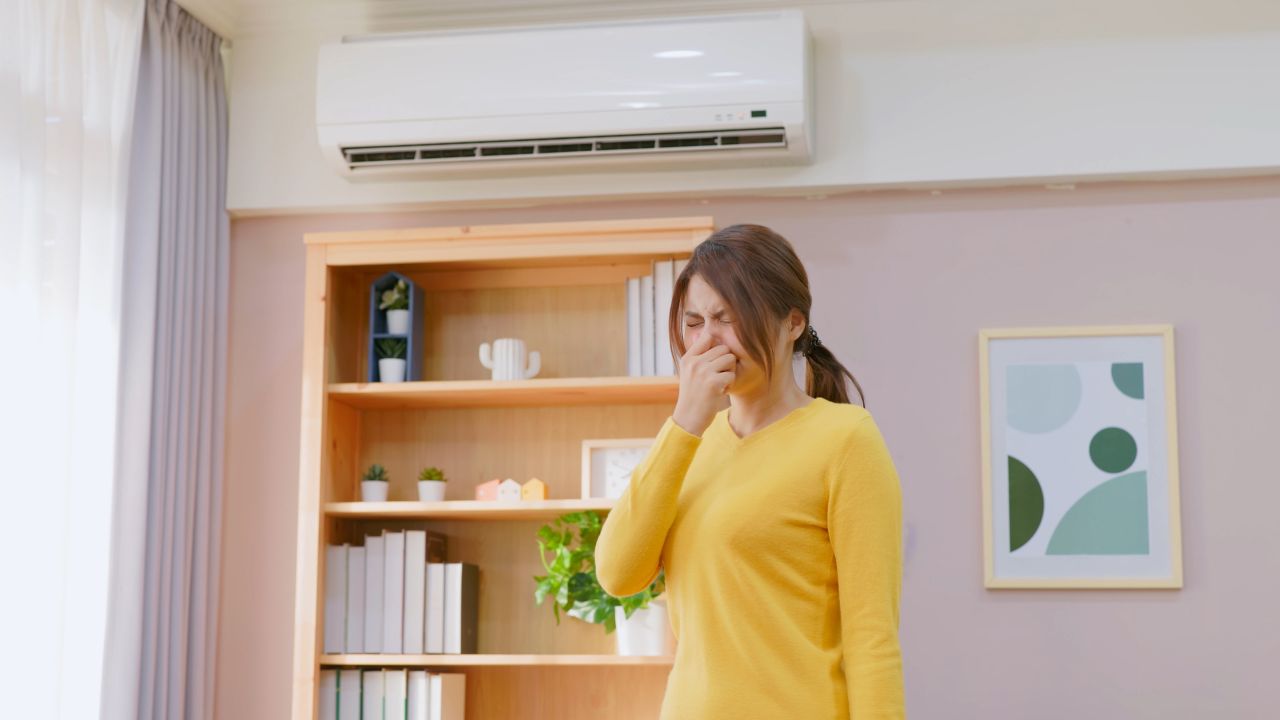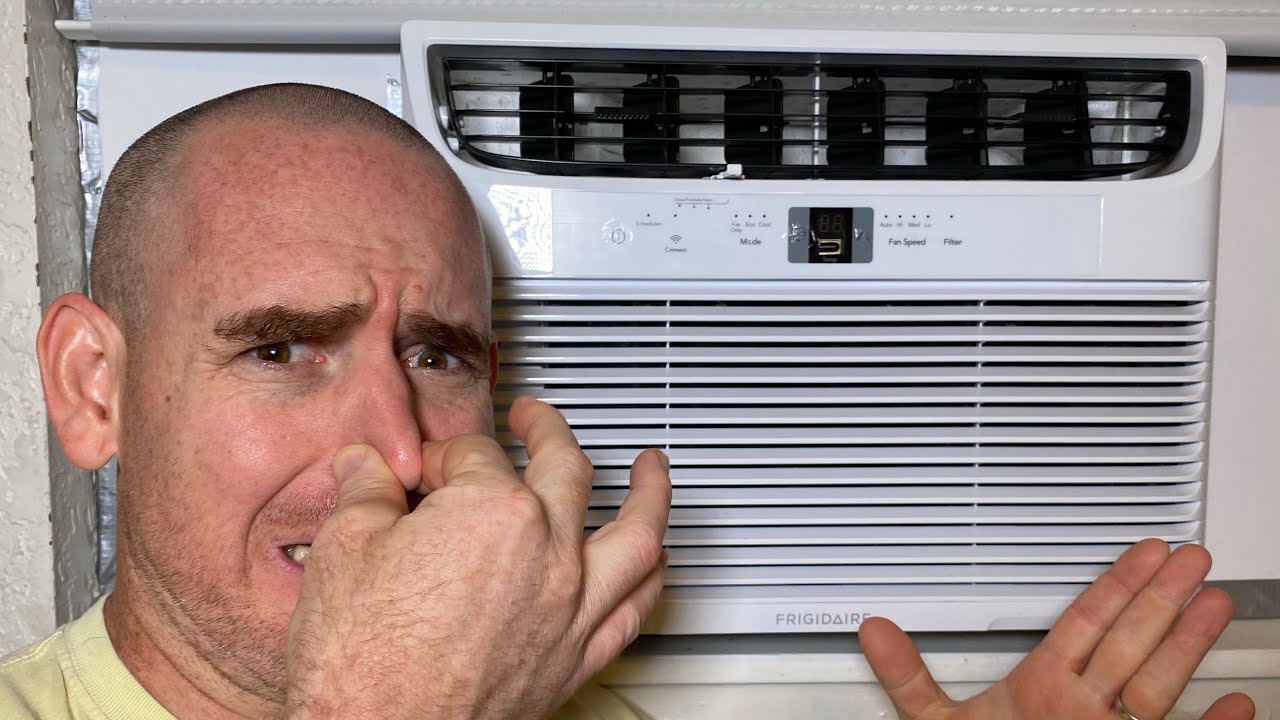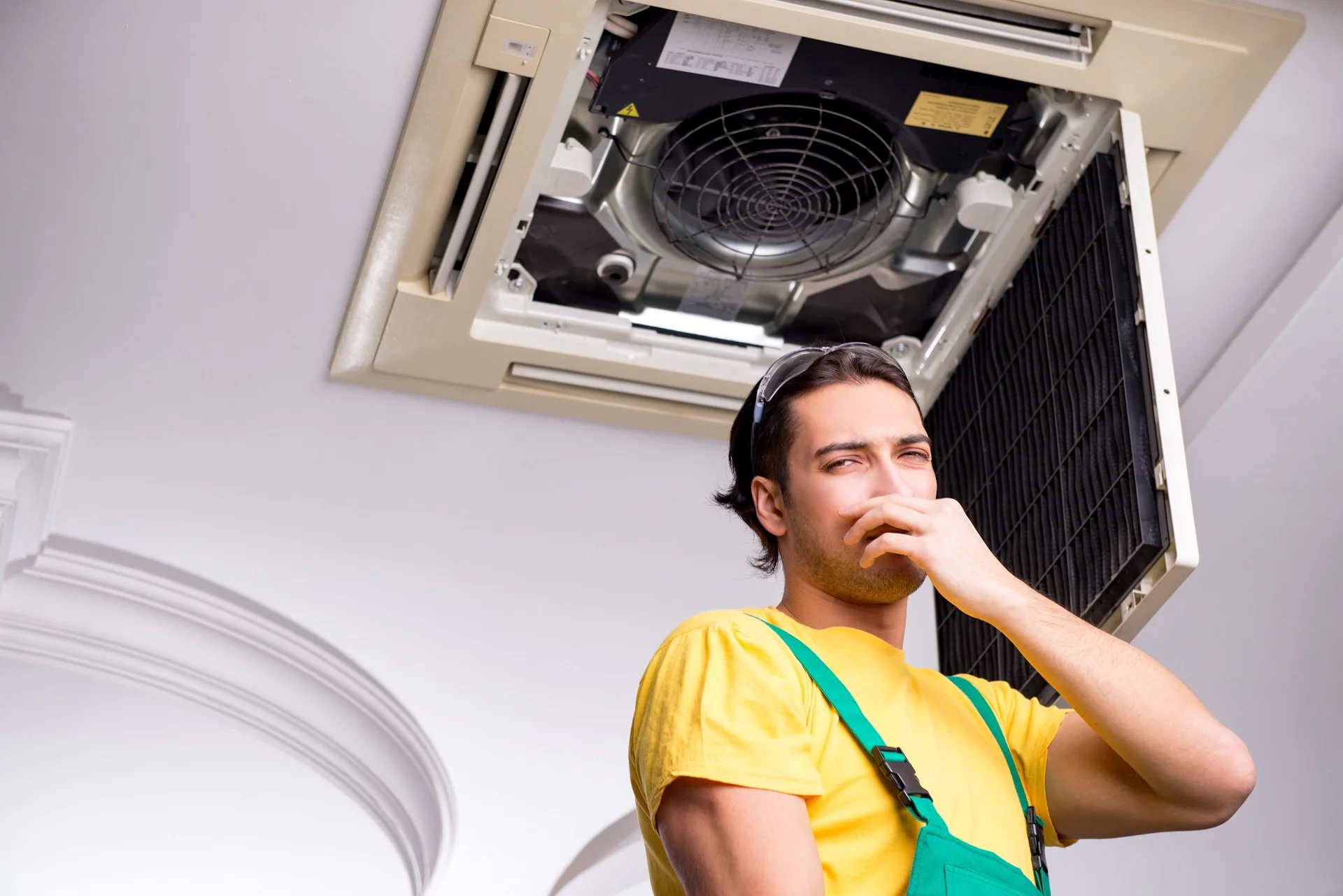Air Conditioner Stinks When I Turn It On

Air Conditioner Stinks When I Turn It On: A Homeowner's Guide to Smells and Solutions
That first blast of cool air should be a welcome relief, but what if it's accompanied by a foul odor? An air conditioner that stinks when you turn it on is a common problem, and while some causes are simple fixes, others require professional attention. This guide will walk you through troubleshooting the most common culprits, offering DIY solutions where possible and advising when to call a qualified HVAC technician.
Safety First!
Before you begin any troubleshooting, ensure the power to your air conditioner is completely shut off at the breaker. Working with electricity can be dangerous, and this is a crucial safety precaution. If you're uncomfortable working with electrical components, call a professional.
The Usual Suspects: Decoding the Smells
The type of odor can often point you to the source of the problem. Here's a breakdown of common AC smells and their likely causes:
- Musty or Moldy Smell: This is the most common complaint and usually indicates mold or mildew growth inside the system, most likely in the evaporator coil or drain pan.
- Burning Smell: This can be a serious issue, potentially indicating a burning component like a motor, wiring, or a belt (in older units).
- Rotten Egg Smell: This is usually caused by a gas leak, either natural gas or refrigerant. This is a serious hazard – evacuate your home and call your gas company or a qualified HVAC technician immediately.
- Chemical Smell: This could be a refrigerant leak or the off-gassing of a new component. Refrigerant leaks are harmful and require professional repair.
- Dirty Sock Smell: This distinctive odor is often caused by bacteria and other organic growth on the evaporator coil.
- Exhaust Fumes: This indicates a potential problem with the exhaust system of a gas-fired furnace sharing ductwork with the AC. Carbon monoxide poisoning is a serious risk.
DIY Troubleshooting Steps
Let's start with the simpler solutions you can try yourself. Remember to always prioritize safety!
1. Change the Air Filter
A dirty air filter restricts airflow, causing your AC to work harder and potentially leading to mold growth. Replacing the filter is the easiest and often the most effective first step.
Tools Needed: New air filter (correct size for your unit).
Procedure:
- Locate the air filter compartment (usually in the return air vent or the air handler unit).
- Remove the old filter and note its orientation.
- Insert the new filter with the arrows pointing in the direction of airflow.
2. Clean the Condensate Drain Line
The condensate drain line carries away moisture that condenses on the evaporator coil. If it becomes clogged with algae or debris, water can back up and cause mold growth.
Tools Needed: Wet/dry vacuum, stiff wire or pipe cleaner, bleach (optional).
Procedure:
- Locate the condensate drain line (usually a PVC pipe exiting the air handler unit).
- Disconnect the drain line.
- Use a wet/dry vacuum to suck out any clogs.
- Alternatively, use a stiff wire or pipe cleaner to dislodge debris.
- Pour a cup of diluted bleach (1 part bleach to 10 parts water) down the drain line to kill any remaining mold or algae. (Caution: Avoid mixing bleach with other chemicals.)
- Reconnect the drain line.
3. Clean the Evaporator Coil (If Accessible and Comfortable)
This is a more involved task, and we recommend caution. The evaporator coil is located inside the air handler unit and is responsible for cooling the air. It can accumulate dust, dirt, and mold, leading to unpleasant odors.
Tools Needed: Screwdrivers, fin comb, coil cleaner (specifically designed for evaporator coils), soft brush, vacuum with hose attachment.
Procedure:
- Turn off the power to the AC unit at the breaker!
- Remove the access panel to the air handler unit (you may need a screwdriver).
- Locate the evaporator coil.
- Use a vacuum with a hose attachment to remove loose dust and debris.
- Straighten any bent fins with a fin comb.
- Apply coil cleaner according to the manufacturer's instructions.
- Use a soft brush to gently scrub the coil.
- Rinse the coil with water (if the manufacturer's instructions allow).
- Allow the coil to dry completely before reassembling the unit.
- Replace the access panel.
- Turn the power back on.
Important Note: Be very careful when cleaning the evaporator coil. The fins are delicate and can be easily damaged. If you're not comfortable with this process, it's best to leave it to a professional.
4. Check the Outdoor Unit (Condenser)
While less common, debris and overgrown vegetation around the outdoor condenser unit can restrict airflow and contribute to odors. Make sure the unit is clear of leaves, grass clippings, and other obstructions. Clean the fins gently with a garden hose, spraying from the inside out.
When to Call a Professional HVAC Technician
If you've tried the DIY solutions above and the odor persists, or if you experience any of the following, it's time to call a professional:
- Burning smell: This is a sign of a serious mechanical or electrical problem.
- Rotten egg smell: This indicates a potential gas leak.
- Chemical smell: This could be a refrigerant leak, which requires specialized equipment and expertise to repair.
- You're uncomfortable working with electrical components or disassembling the AC unit.
- The odor is strong and persistent, even after cleaning.
- You suspect mold growth that is beyond your ability to clean.
Professional Services and Potential Costs
A qualified HVAC technician can diagnose the problem accurately and perform necessary repairs. Here are some common services and their estimated costs (these are general estimates and may vary depending on your location and the complexity of the repair):
- AC System Inspection: $75 - $200
- Evaporator Coil Cleaning: $150 - $500
- Refrigerant Leak Repair: $200 - $1500 (depending on the size and location of the leak)
- Condensate Drain Line Replacement: $100 - $300
- Motor Replacement: $300 - $1000
- Duct Cleaning: $300 - $1000+ (depending on the size of your ductwork)
- Mold Remediation: This can vary greatly depending on the extent of the mold growth. Get multiple quotes.
Important Considerations:
- Refrigerant Type: Older AC units may use R-22 refrigerant, which is being phased out. If you have a refrigerant leak, you may need to upgrade to a newer unit that uses R-410A or another approved refrigerant.
- Warranty: Check your AC unit's warranty. Some repairs may be covered.
- Second Opinions: It's always a good idea to get multiple quotes from different HVAC technicians before committing to a major repair.
Preventing Future Odors
Prevention is key to keeping your AC smelling fresh. Here are some tips to minimize the risk of odors:
- Change your air filter regularly (every 1-3 months).
- Schedule annual AC maintenance with a qualified HVAC technician.
- Keep the area around the outdoor condenser unit clear of debris.
- Ensure proper ventilation in your home to reduce humidity.
- Consider using UV lights in your air handler to kill mold and bacteria.
Troubleshooting Checklist
Before calling a professional, run through this quick checklist:
- Is the air filter clean?
- Is the condensate drain line clear?
- Is the outdoor unit free of obstructions?
- Are there any unusual noises coming from the AC unit?
- Is there any visible mold or mildew growth?
- Does the odor smell like burning, gas, or chemicals?
By following these steps, you can often identify and resolve the source of the odor, restoring fresh, clean air to your home. Remember to prioritize safety and call a professional when needed. A little preventative maintenance can go a long way in keeping your air conditioner running smoothly and smelling great for years to come.










